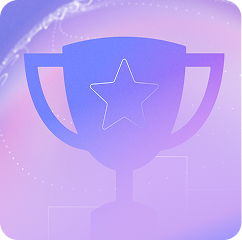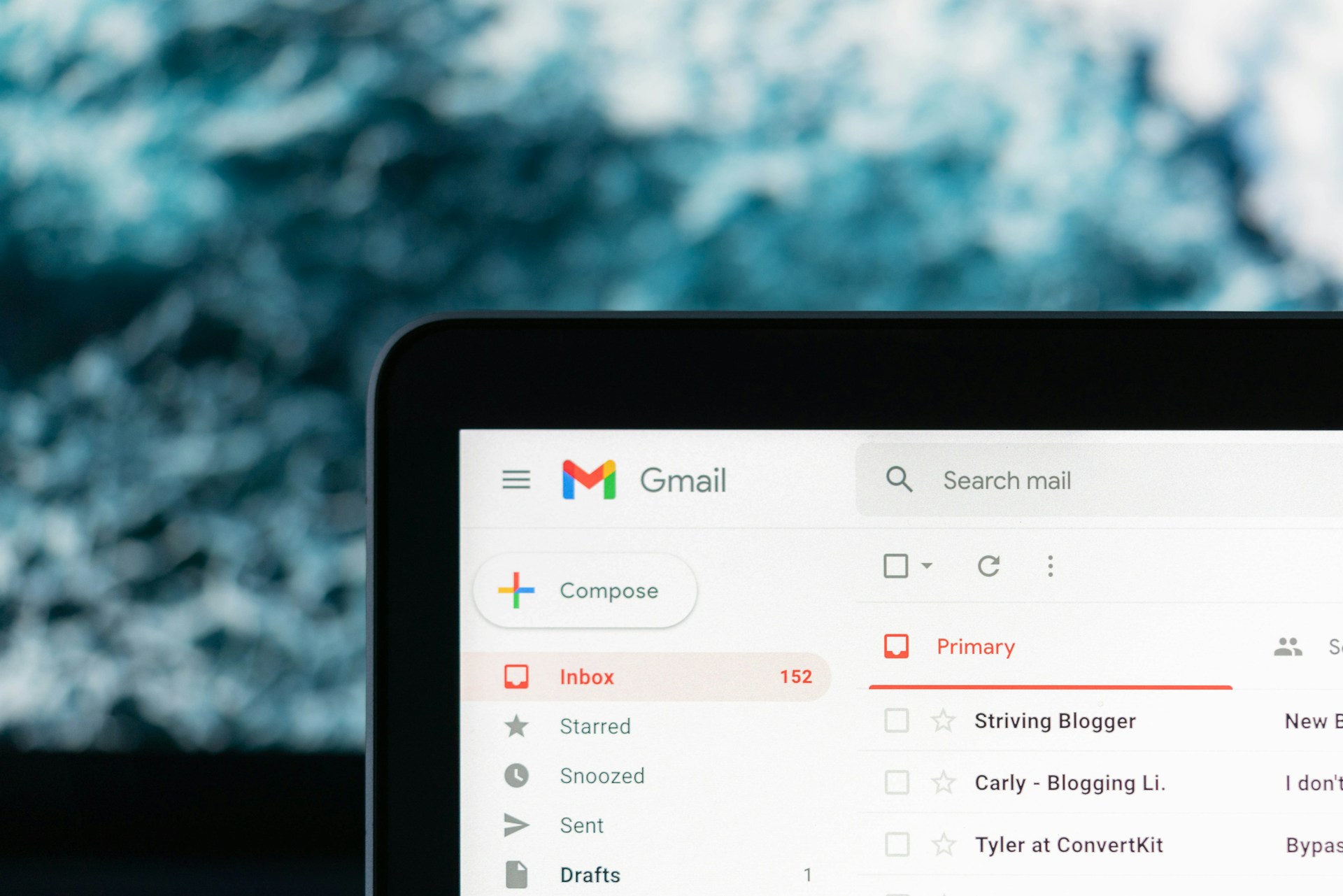// Recruitment Strategies
What is an Applicant Tracking System (ATS)? | Agency Recruiter’s Guide
17/10/2025
15 MIN
If you’re an agency recruiter, you know that staying on top of multiple roles, clients, and candidates can feel like a juggling act. An applicant tracking system (ATS) is designed to take some of that weight off your shoulders. But with so many tools on the market, and new AI-powered features appearing all the time, it can be hard to figure out what really matters.
This guide is here to help you make sense of it all. We’ll break down what an ATS actually is, how modern systems are using AI to automate repetitive tasks, and what to look for when choosing the right platform for your agency. Whether you’re upgrading or starting fresh, this will give you the context and clarity you need to make an informed decision.
ATS: The definition
Applicant Tracking System: The definition
An applicant tracking system, or ATS, is software that helps recruitment teams manage the end-to-end hiring process. In the agency world, where recruiters often juggle dozens of roles across multiple clients, an ATS becomes the operational backbone. It’s the place where candidate data lives, where pipelines are tracked, and where recruiters can streamline their workflows.
At its core, an ATS helps with storing CVs, posting jobs, tracking candidate progress, and managing communications. But in an agency setting, its role goes beyond administration. A good ATS helps recruiters move faster, stay organised, and deliver a better experience to both candidates and clients. It creates visibility across open roles, centralises candidate history, and reduces the risk of duplicate outreach or missed follow-ups.
In short, it’s the system that supports a recruiter’s speed, scale, and service: three things that define success in agency recruitment.
What are applicant tracking systems used for?
Leveraging agentic AI to streamline workflows
Core recruitment platforms like Atlas are introducing generative AI features that go beyond surface-level automation. These tools can take on tasks proactively, like drafting outreach messages, suggesting candidate matches, or flagging bottlenecks in the pipeline, based on recruiter intent. This means less micromanaging of the system and more time spent on high-impact work.
Centralising data on qualified candidates
An ATS gives agency recruiters a single source of truth for every candidate. Instead of chasing down CVs across inboxes, spreadsheets, and job boards, everything is stored in one place. This makes it easier to find, review, and re-engage candidates for future roles.
Managing hiring processes across multiple clients
With multiple clients and vacancies on the go, keeping track of every job posting can get messy fast. An ATS helps recruiters manage each job description, individual hiring stages, and client-specific requirements in a structured, organised way, ensuring they’re always delivering exceptional service.
Automating CV parsing for job seekers
Manual screening takes time that agency recruiters often don’t have. Most ATS platforms now use parsing tools to extract and organise CV data instantly. Combined with filters and search features, this speeds up shortlisting without sacrificing quality.
Tracking candidate progress through the recruitment pipeline
From first outreach to final offer, an ATS helps recruiters track exactly where each candidate is in the process. This visibility means fewer dropped balls, better follow-ups, and a smoother experience that matches best-fit talent to the right job requisitions.
Facilitating client and candidate communication
Communication is key in agency recruitment, and an ATS can support this with automated emails, notes, and reminders. It helps recruiters stay in sync with candidates and clients without needing to dig through their inbox.
Reducing admin through task automation
Agency recruiters deal with a high volume of repetitive tasks while searching for the right talent. ATS tools can automate things like interview scheduling, status updates, and reminders, freeing up time for relationship building and revenue-generating work.
What types of recruitment are supported by applicant tracking systems?
Executive search
For roles where discretion, strategy, and precision are key, an ATS helps executive recruiters manage long sales cycles and complex candidate journey requirements. From tracking outreach to storing detailed talent acquisition research, it keeps high-level searches organised and confidential in one central location.
Permanent recruitment
Most agency recruiters work with clients to fill long-term workforce roles. An ATS supports this by helping manage pipelines, match candidates to client needs, and keep records of candidate history that can inform future placements.
Contract recruitment
When clients need skilled professionals for fixed periods, speed and accuracy are everything. An ATS helps recruiters increase visibility and quickly surface available candidates, track contract lengths, and manage compliance requirements to match candidates with the right employers.
Temp staffing
Temporary placements come with high volume and fast turnaround times. An ATS can manage shift scheduling, availability tracking, and rapid redeployment, giving recruiters the tools they need to fill bookings at short notice, all while also reducing the candidates’ job hunting to a minimum.
Volume or project-based hiring
When clients ramp up for a new location or a seasonal push, recruiters need to scale their efforts fast. An ATS supports bulk candidate management, automated communications, and tracking across multiple roles, making it easier to meet tight deadlines.
Who uses an ATS?
Applicant tracking systems aren’t just for recruiters. They support different users across the agency-client-candidate workflow, each with their own role and purpose. Here’s how the main user types interact with an ATS:
Administrators
Admins are typically responsible for configuring the ATS to match agency workflows. They handle user permissions, set up workflows and pipelines, maintain data hygiene, and ensure compliance standards like GDPR are met. A well-managed ATS gives recruiters what they need without unnecessary friction.
Recruiters
Recruiters are the primary users of the ATS. It’s where they search, filter, track, and engage candidates across open roles. Whether it’s sourcing new talent, moving someone through the pipeline, or updating notes after a client call, the ATS is their daily workspace. When the system runs smoothly, recruiters can focus more on relationship-building and less on admin.
Clients
Some ATS platforms include client portals or limited-access views for hiring managers. This allows clients to review shortlisted candidates, leave feedback, and stay in sync with progress. For agency recruiters, giving clients controlled access to real-time updates can help build trust and speed up decision-making.
Which industries use an ATS?
Executive search recruitment
In executive search, recruiters need to manage long, research-driven hiring processes with multiple stakeholders. An ATS helps store detailed candidate profiles, track outreach over time, and maintain a high level of professionalism throughout senior-level hiring.
Software recruitment
Tech roles move quickly, and competition for top talent is fierce. Recruiters in software need tools that let them search, filter, and act fast. An ATS supports this with keyword search, skill tagging, and tracking across fast-moving roles like engineers, developers, and product specialists.
Finance recruitment
Finance recruiters often manage candidates with highly specific skills, certifications, and experience. An ATS helps organise profiles by sector, manage compliance documentation, and ensure accurate shortlisting for roles in banking, accounting, or fintech.
Hospitality recruitment
Hospitality roles often involve high-volume hiring, rapid turnover, and variable scheduling. ATS platforms help recruiters manage candidate flow, track availability, and communicate quickly with talent pools, especially in seasonal or multi-site hiring.
Healthcare recruitment
In healthcare, compliance and credential tracking are non-negotiable. An ATS gives recruiters a way to manage certifications, expiry dates, and candidate availability, while keeping placement pipelines moving for roles across nursing, allied health, and support staff.
Rec2Rec recruitment
Recruiting recruiters means understanding fast-paced sales environments and matching culture fit as much as skill. An ATS helps Rec2Rec specialists track detailed candidate histories, manage client preferences, and place talent into roles where they can thrive.
Construction recruitment
Construction recruiters deal with a wide range of skilled and unskilled roles, often on rotating contracts. An ATS helps with managing large databases, shift placements, compliance checks, and redeployment, especially when filling multiple roles across large projects.
What are the benefits of an applicant tracking system in agency recruitment?
When answering the question of what an ATS does, it makes sense to highlight the advantages that come with using one. For agency recruiters, the right ATS helps reduce admin and drive meaningful improvements in placement speed, performance visibility, and overall profitability.
Let’s take a look at what you stand to gain.
Faster placements
An ATS helps recruiters move quickly by automating repetitive tasks and surfacing the best candidates faster. That means more time spent speaking with qualified talent and less time chasing paperwork or digging through inboxes.
Better candidate experience
With automated updates, smoother scheduling, and consistent communication, candidates get a more professional, responsive experience. This improves engagement and helps build a strong reputation for your agency in a competitive market where every applicant comes with their own unique career journey to consider.
Improved collaboration
Whether you’re working with a resourcer, an account manager, or another consultant, an ATS makes it easier to stay aligned. Shared notes, real-time updates, and visibility across the pipeline reduce overlap and keep everyone moving in the same direction.
Higher data accuracy
Manual data entry often leads to errors or gaps. An ATS keeps candidate records consistent and structured, which means you can trust your database to deliver relevant search results, compliance checks, and reporting insights based on very specific needs.
Time saved on admin
From automated CV parsing to scheduled emails and reminders, an ATS cuts down on the critical admin load that slows recruiters down. The result is more time spent on revenue-generating activity and less time lost to repetitive manual work.
Clearer performance insight
A good ATS lets you track analytics and KPIs like time-to-fill, placement ratios, and candidate response rates. This gives recruiters and managers the ability to spot patterns, identify bottlenecks, track trends, and make data-backed decisions with more efficient results.
What features does an ATS have?
AI tools that take notes and track insights
Meeting with candidates and clients back-to-back leaves little time for admin. AI note takers automatically record, summarise, and log conversations, so key details never get lost and your CRM stays up to date. Details such as salary expectations, upskilling plans, recruiters’ career advice, or anything related to your conversations get automatically picked up and integrated into the system.
Automation that handles repetitive tasks
From parsing CVs to updating candidate statuses, automation removes the need to manually complete the same tasks over and over. This helps recruiters stay focused on work that adds real value.
Outreach tools that feel personal at scale
Customisable templates and smart sequencing help recruiters send tailored emails that actually get responses. Whether you’re chasing a passive candidate or re-engaging a cold lead, personalised outreach makes a difference.
Dashboards that give clarity on pipeline and performance
A clear, real-time view of your pipeline helps you prioritise the right roles and candidates. With customisable dashboards, you can track key metrics, set goals, and keep your workflow on target.
Scoring frameworks to assess candidate fit
Competency scoring allows recruiters to rate and compare candidates based on client-specific requirements. This creates a consistent, data-driven way to shortlist talent and justify decisions to hiring managers with generative AI tips based on every minuscule detail in your system.
Scheduling tools that work in the background
Automated interview scheduling eliminates the email ping-pong. Candidates can pick times that suit them, and calendars stay in sync, freeing recruiters from the admin loop.
Reports that showcase your work
When working executive-level roles, presentation matters. Many ATS platforms offer branded, customisable executive search reports that recruiters can share with clients to showcase progress, pipeline quality, and shortlist data.
Business development tools built in
Some ATS platforms now offer features that highlight warm leads, track client interactions, and flag companies hiring for similar roles. This turns everyday activity into new business opportunities without switching tools.
Is there an alternative to using an applicant tracking system?
No, there really isn’t an alternative to a dedicated ATS that works as your recruitment partner. While spreadsheets, inboxes, and standalone tools might get you part of the way, they can’t deliver the consistency, speed, and scalability agency recruiters need to stay competitive, especially without AI support.
Let’s look at what happens when you try to run a desk without one.
Disorganised candidate data and lost opportunities
Without an ATS, candidate information lives across email threads, notes, and memory. This leads to missed follow-ups, duplicated effort, and top talent slipping through the cracks simply because nothing is centralised or searchable.
Time wasted on manual admin and low-value tasks
Manually entering data, tracking candidate stages, and writing the same emails repeatedly eats into time that could be spent building relationships or closing deals. The more placements you work, the more this inefficiency grows.
Missed follow-ups and inconsistent communication
It’s easy to forget where a candidate is in the process or whether a client ever responded when everything is tracked manually, even when working with a seemingly perfect job opportunity. This creates gaps in communication, slows down progress, and risks damaging your agency’s reputation.
Lack of visibility into pipeline health and performance
Without structured workflows and reporting, it’s hard to spot what’s working and what’s not in your organization. You may not know which jobs are stalling, which sources are performing, or how close you are to your targets.
Slower placements and reduced competitiveness
When every step takes longer, you lose ground to agencies using smarter tools. AI-driven ATS platforms give recruiters speed, structure, and insights that turn process into performance. Without one, you rely on effort alone to compete.
How to pick the best ATS for your needs
Now that we have taken a close look at the question of “What is an ATS?”, let’s bring the topic home. How exactly do you pick the best tool that fits your agency’s practical needs? With so many choices available on the market, here’s a list of questions you can use to narrow your list down to a few standout platforms:
- Does the ATS include automation that makes candidate search and matching easy?
- Can it reduce repetitive admin for your agency and save your precious time?
- Are there generative AI features that actively assist with screening and note-taking?
- Does it allow for personalised, scalable outreach that boosts response rates?
- Can you access customisable dashboards that keep your team aligned on performance?
- Will it support your business development efforts by highlighting new opportunities?
- Is it flexible enough to adapt to different industries or workflows as your desk evolves?
- Does it offer a free trial so you can personally test the ATS with your team?
Frequently Asked Questions (FAQs) on what an ATS is
An ATS helps recruiters manage the full hiring process, from storing CVs and tracking candidates to automating outreach and scheduling interviews. For agency recruiters, it centralises operations, reduces manual work, and improves speed to placement.
While a CRM focuses on managing client relationships and sales pipelines, an ATS is built to handle candidates and recruitment workflows. Many tools combine both functions, but an ATS is purpose-built for sourcing, screening, and managing placements.
Yes, especially in a high-volume, fast-paced environment. AI tools can automate repetitive tasks, surface top candidates, take notes, and personalise outreach. This frees up recruiters to focus on relationships and results.
Most ATS platforms support a range of recruitment models, including executive search, contract, temp, and high-volume hiring. The key is to choose a system that adapts to your process, rather than forcing you to adapt to it.
Without an ATS, recruiters risk losing track of candidates, duplicating effort, and missing out on placements. Manual processes slow things down and make it harder to compete with agencies using smarter tools.
How Atlas makes all the difference
An applicant tracking system gives agency recruiters the structure, speed, and visibility they need to succeed. It removes manual admin, keeps candidate data organised, and helps recruiters place faster with fewer bottlenecks.
Atlas takes this even further with built-in generative AI ATS features that actively support your workflow. It writes personalised outreach, builds shortlists from job specs, and captures call notes automatically. Tasks that once ate into your day now happen in the background.
With Atlas, recruiters spend more time with clients and candidates, and less time on admin. It’s a smarter way to scale your desk and deliver results. Ready to explore further? Start here >>








